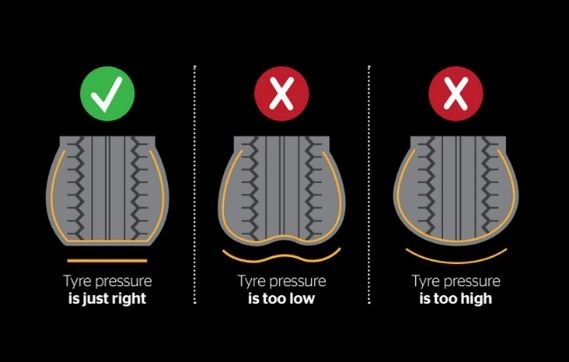Imagine your tent as a sturdy shield, protecting you from the unpredictable wrath of Mother Nature. That shield, however, isn't invincible – it needs some care and attention to keep you dry when the rain comes pouring down.
By waterproofing your tent, you're fortifying this protective barrier between you and the elements. As an adventurer who cherishes freedom and exploration in the great outdoors, understanding how to waterproof a tent is essential knowledge.
This article will guide you through:
- Selecting the right tent for weather resilience
- Using a waterproofing spray effectively
- Seam sealing techniques
- Why a footprint can be your best friend
We'll also delve into proper tent maintenance tips and tricks for setting up your tent correctly to maximize protection against moisture.
The weather shouldn't dictate your adventures; with these practical skills under your belt, you'll be ready to camp come rain or shine!
Key Takeaways
- Apply waterproofing spray evenly on the exterior surface of the tent and allow it to dry completely before using the tent.
- Choose a tent made of nylon/polyester for lightweight camping or canvas/poly-cotton for better water resistance, depending on the climate.
- Inspect the tent for potential problem areas and use seam sealer to address leaks; patch small holes/tears with repair tape.
- Use a tent footprint made of durable material like polyethylene/polyester to improve water resistance and secure it properly to prevent movement or bunching up.
Selecting the Right Tent
Before you even think about waterproofing, let's make sure you've got the right tent for your camping needs! Your choice of a tent is one of the most crucial decisions you'll make. It's your home away from home, providing shelter and comfort in the wilderness. Hence, it should be durable enough to withstand harsh weather conditions.
Pay close attention to Tent Materials when selecting your outdoor abode. The fabric matters – a lot! Nylon and polyester tents are common due to their lightweight nature and relative durability. However, if you're expecting heavy rainfall or damp conditions, opt for canvas or poly-cotton tents; they offer better water resistance.
Climate Suitability is another critical factor while choosing a tent. If you plan on camping in an area with heavy rainfalls or high humidity, go for a tent designed specifically for such climates – usually denoted as 3-season or 4-season tents.
Remember that waterproofing isn't just about applying some spray-on solution; it starts with choosing the right gear. So pick wisely because freedom is found not only in wild landscapes but also in well-prepared equipment that keeps you dry and cozy through all types of weather!
Applying a Waterproofing Spray
Imagine waking up dry and comfortable, even after a night of heavy rain; all you need to do is apply a good quality weatherproofing spray to your camping gear. This isn't as daunting as it sounds if you follow these simple steps.
Start by setting up your tent in a well-ventilated area.
Spray the waterproofing product evenly across the exterior surface of the tent, focusing on seams and high-wear areas.
Allow the sprayed areas to dry completely before packing away your tent.
Repeat this process annually or whenever water stops beading on the fabric surface.
Always remember to wear protective gear while spraying, such as gloves and safety glasses.
Mastering spray application techniques can take some practice, but it's well worth it for that sense of freedom when nature throws its worst at you. Be consistent with your strokes and make sure every square inch is covered.
Spray safety precautions are also essential; avoid inhalation by wearing a mask and never spray near open flames. Regardless of how much experience you have with camping gear, always respect these guidelines.
So don't let bad weather ruin your adventure. Embrace the elements knowing that with proper preparation, you'll wake up fresh each morning – ready to conquer what lies ahead!
Seam Sealing
Now that you've addressed general waterproofing, let's hone in on a crucial detail – seam sealing. It's vital to thoroughly inspect your tent for any potential problem spots where water might sneak in. Correctly applying seam sealer can make all the difference between waking up dry and comfortable or damp and miserable, so pay close attention as we delve into this essential camping gear maintenance task.
Identifying potential problem areas
Peering at your tent like a hawk, you'll spot potential problem areas that could let in the unwelcome guest of water. A thorough leak inspection is crucial. Remember, freedom comes with preparation.
Material assessment plays a significant role too. Not all tents are created equal – some materials may be more prone to water intrusion than others. Here's a quick guide to assist:
| Problem Area | Solution |
|---|---|
| Worn-out zippers | Apply waterproofing spray |
| Leaky seams | Use seam sealer |
| Small holes or tears | Patch with repair tape |
| Thin material areas | Apply fabric guard |
Don't allow nature's whims to dampen your spirit of adventure. With a keen eye and practical steps, you can ensure your shelter remains dry, allowing you to enjoy the wilderness without concern for inclement weather interruptions.
Correct use of seam sealer
Don't overlook the importance of correctly using seam sealer, as it's a vital tool in keeping your outdoor shelter dry and cozy during those unpredictable storms.
The first thing to consider is the sealer type you'll use. There are different types like silicone-based, urethane-based sealers, and more. Each has its pros and cons, so make sure to choose one that suits your tent fabric best.
Fabric compatibility is crucial here. Not every sealer works well with all materials. For example, silicone sealers bond best with silicone-treated fabrics while a polyurethane sealer fits non-silicone materials better. Take time to understand your tent's fabric composition before making any decision.
Remember, a well-sealed tent means more freedom from worry about weather conditions turning against you on your adventures!
Using a Tent Footprint
Believe it or not, using a tent footprint can significantly improve your tent's resistance to water. A well-placed and wisely chosen footprint acts as an additional barrier between the ground and the base of your tent, warding off moisture that could otherwise seep in.
When considering the use of a footprint, focus on these aspects:
- Footprint placement: You want to ensure that your footprint is placed right under your tent without any part sticking out. If any section protrudes, it could collect rainwater and channel it under your tent.
- Material choice: Opt for durable materials like polyethylene or polyester with a high denier count for better water-resistance.
- Size: Your footprint should match the size of your tent floor exactly to prevent pooling of water around the edges.
- Installation: Securely attach it to prevent movement or bunching up, which can lead to uneven surfaces and possible leaks.
Embracing this camping gear essential won't only keep you dry but also prolongs the lifespan of your tent by protecting against abrasion from rough terrain. Remember, when exploring nature's wild beauty and freedom unencumbered by the daily grind, staying dry makes all the difference in enjoying this liberating experience fully.
Proper Tent Maintenance
Just as you'd care for your trusty hiking boots, so should you tend to your temporary wilderness abode, ensuring it's always ready for the next adventure. Proper tent maintenance not only involves fabric conditioning but also includes an array of preventive measures.
| Tent Maintenance Tips | Benefits |
|---|---|
| Regular Cleaning | Prevents mildew and odour |
| Fabric Conditioning | Enhances water resistance |
| Checking Zippers & Seams | Helps avoid leaks |
| Drying Before Storage | Avoids mould growth |
| Repairing Small Damages | Extends tent lifespan |
Regular cleaning is paramount. It prevents odours and keeps the fabric fresh. Remember, a clean tent is a happy tent! Next comes fabric conditioning. This can drastically improve your tent's water resistance, helping you stay dry in wet weather conditions.
Don't forget to check zippers and seams regularly too. These are often overlooked but could lead to unwanted leaks if they fail or tear. Always ensure your camping gear is dry before you pack it away to avoid mould growth—nothing ruins a trip faster than discovering mould on arrival at your site!
Repair any small damages promptly so that they don't escalate into significant issues; this will extend the life of your gear significantly while keeping you safe from harsh elements during trips. It's all about enjoying freedom without worry!
Setting Up Your Tent Correctly
Now that you've got the low-down on proper tent maintenance, let's dive headfirst into another crucial aspect of waterproofing your tent – setting it up correctly.
Think of it as laying down a solid foundation for a house; only here, your stakes and orientation are your bricks and mortar.
Stake placement is more than just hammering pegs into the ground. It's about creating tension to prevent water pooling on your tent fabric. Position each stake at a 45-degree angle away from the tent, pulling the material taut but not overly tight. This technique ensures rain slides off rather than collects on top.
Tent orientation is another key factor in keeping dry inside your temporary wilderness home. Aim to set up with the back of your tent facing prevailing winds. Not only will this reduce wind resistance (and those nightmare-inducing flapping noises), it'll also help rain drive past rather than into your abode.
Remember, there's no ‘one-size-fits-all' when it comes to camping survival skills like these. Trial and error are part of the journey towards mastering nature's elements, so embrace every trip as an opportunity to learn and grow in freedom through self-reliance.
Weather Considerations
When you're planning your next outdoor adventure, it's crucial to consider the weather forecast and prepare accordingly. Don't underestimate the power of nature; even a light drizzle can make your camping experience damp and uncomfortable if you're not prepared with an adequately waterproofed tent.
Rain strategies are essential in ensuring your survival in harsh weather conditions. A good practice is to seal all seams on your tent using a seam sealer, which prevents any moisture from penetrating inside. Also, investing in a high-quality rainfly that covers the entire tent will provide an additional layer of protection against heavy downpours. Remember, the goal here isn't just to keep dry; it's about retaining warmth as well.
Wind protection should also be considered when preparing for inclement weather. You'll want to ensure that your tent has adequate wind resistance by utilizing sturdy stakes and guylines that secure your shelter firmly in place. Strong winds can easily transform a poorly secured tent into a makeshift kite soaring through the air.
To equip yourself effectively for all weather scenarios on your camping trips, remember these two keywords – rain strategies and wind protection. It's not just about braving the elements, but thriving amidst them without sacrificing comfort or safety.
Frequently Asked Questions
What are the signs that my tent needs to be re-waterproofed?
Like a knight's armor, your tent may start showing wear. If it leaks in rain or dew penetrates the fabric, it's time to grab waterproofing materials and understand your tent fabric types.
Can I waterproof a tent that is already wet?
You can't waterproof a wet tent. First, use drying methods like sun exposure or a dry cloth. Once completely dry, apply waterproofing materials evenly. Remember, proper application ensures your freedom to camp in any weather!
How often should I waterproof my tent?
You should waterproof your tent annually for optimal tent durability. However, if you often camp in harsh weather conditions, increase the waterproofing frequency to maintain your freedom of camping anytime, anywhere safely.
Can I use any type of waterproofing spray for my tent?
Selecting the right spray for your tent isn't rocket science, but it's crucial! Not every spray will do. Master application techniques for specific products to ensure optimal waterproofing and embrace true camping freedom.
Does the size of the tent affect the waterproofing process?
Size does impact the waterproofing process. Different tent designs and materials may require varying amounts of product or techniques. However, it's more about the material's susceptibility to water than sheer size alone.
Conclusion
Like a steadfast guardian, your tent shields you from the elements. By choosing wisely, using waterproofing spray and seam sealer, employing a footprint, maintaining it well, and setting up properly, you're not just waterproofing a tent – you're bolstering your refuge in nature's wild theater.
So when weather takes center stage, let it perform! You've prepared well and can enjoy the show from the comfort of your fortified sanctuary.







